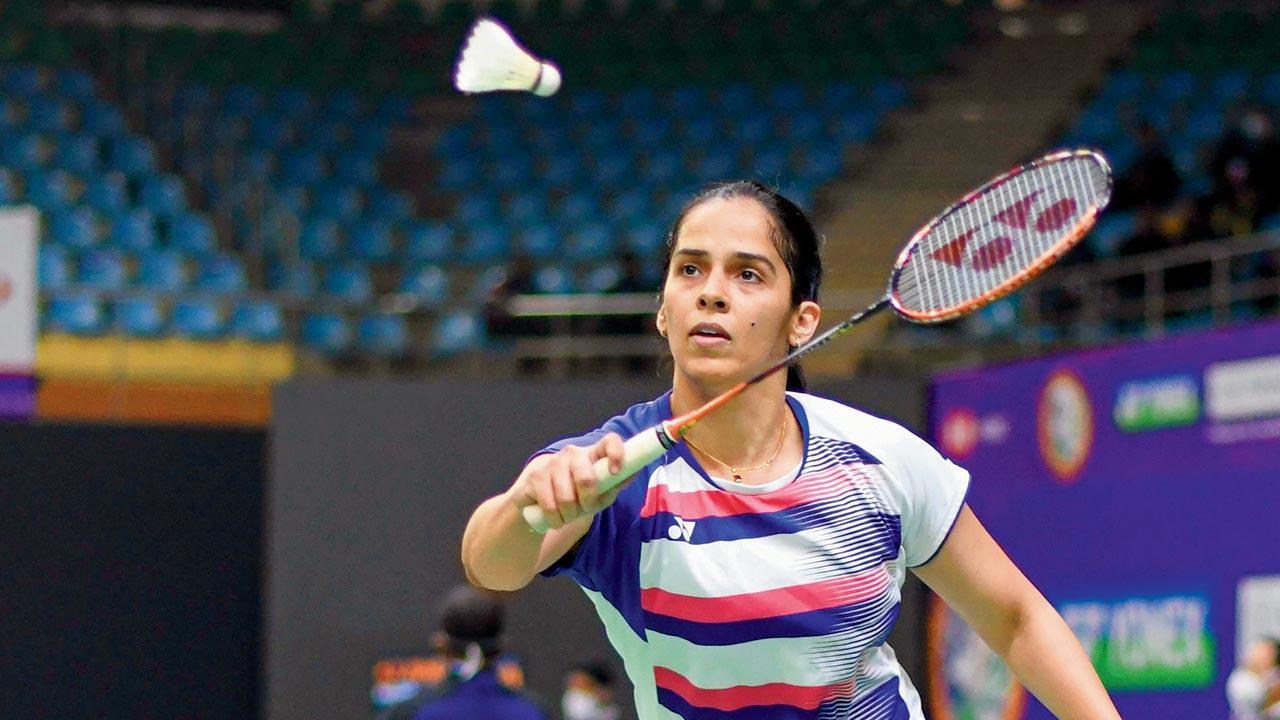With Saina Nehwal recently disclosing her decision to continue playing despite long-term injuries, experts weigh in on recognising when it’s time to pull the plug

Saina Nehwal decided to push her body, despite injuries. Pic/PTI
A few days ago, this newspaper had reported ace badminton player Saina Nehwal sharing her struggles about her prolonged fitness issues. She said that although it often occurred to her to give up, she took it as a challenge to test how many more injuries her body could cope with. In the past year, the former world champion had missed several tournaments, including the World Championships, due to her multiple injuries. This attitude, says exercise scientist and founder of Benercise, Benafsha Gazdar, is also quite common among people pursuing ambitious fitness routines. “During the pandemic, we saw a lot of people following online workout tutorials in hopes of getting fit quickly — many of these routines are actually quite intensive and, without the right foundation of strength and conditioning, can leave you prone to injuries. I often say, anything done too fast and too soon can lead to injuries – in that, if your body is not prepared for an activity, it will undergo a shock it is not ready for and break down,” she explains.
ADVERTISEMENT
 Benafsha Gazdar
Benafsha Gazdar
Gazdar also points out that for professional athletes, stabilisation is a key component in how their training programmes are designed. “For them, the year is divided into the on-season when they are actively training for a competition and an off-season when they are resting and recovering. Without adequate recovery, the physical exertion can become too much. Stabilisation, where they focus on their overall fitness and conditioning, is extremely important to prevent injuries and maximise performance,” she adds.
The right approach
Before you take up an exercise routine, Gazdar advises undertaking a professional assessment to gauge your fitness level and gradually work towards your desired fitness level. “When taking up a sport or an aggressive workout, to prevent injury, it is important to check your form or whether you are performing your exercise correctly. Are you using the right muscles for each exercise or are you compromising some other muscles? Do you have any existing injuries? Is there a pattern of injuries that may be observed? If so, a professional can help you to unlearn that particular movement and learn the right form,” she says. Once you begin your exercise routine, she recommends monthly check-ins with a professional to assess your progress and your fitness levels, and chart out a roadmap to help you achieve your desired goals.

Nutrition mantras
“Although the adage ‘no pain, no gain’ sounds great in theory, our bodies do not feel the same way. Pain means that something is not right. Therefore, we must listen to our bodies to eliminate the risk of preventable injuries that could force us to take the bench,” explains Dr Siddhant Bhargava, a fitness and nutritional scientist and co-founder of Food Darzee.
In addition to rest, he adds that the correct nutrition can help prevent injury and aid recovery from an injury quicker and better. “During rehabilitation, adequate carbohydrates and protein intake can inhibit muscle breakdown and muscle atrophy. As collagen is important to help avoid muscle and tissue injuries, eat foods that help to produce collagen naturally and are rich in proteins and vitamins such as C, E, B1, B2 and magnesium. Further, ensuring that you receive the correct intake of minerals such as calcium, iron, potassium and magnesium can help protect against bone injuries,” he shares.
 Dr Siddhant Bhargava
Dr Siddhant Bhargava
Recognise the warning signs
If you experience any of the following, it may be time to step back and re-examine or alter your exercise programme:
. You are too tired to do anything else after your workout
. The colour of your urine becomes too yellow
. Your sleep schedule is disrupted
. You experience unusual pain or soreness that lasts for more than the 24-48 hours that recovery should typically take
. Overall malaise
The earlier you pick up on these, the better your chances of preventing debilitating injuries Gazdar says. Dr Umesh Shetty, a senior orthopaedic surgeon at Axis Multi-speciality Hospital warns against ignoring injuries or rushing back into your routine without taking enough time to rest and recuperate, since this can increase the risk of re-injury or cause permanent damage.
 Subscribe today by clicking the link and stay updated with the latest news!" Click here!
Subscribe today by clicking the link and stay updated with the latest news!" Click here!







